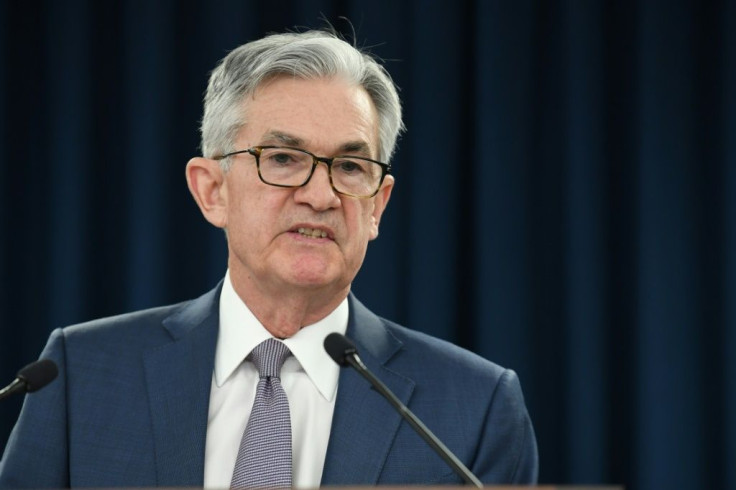Fed’s Minutes Reveal Central Bank Worried COVID-19 Will Continue To 'Weigh Heavily' On Economy

KEY POINTS
- Fed said measures taken to contain the virus’ spread “continued to have substantial effects on economic activity
- The FOMC found a bright spot in the housing industry which “bounced back strongly"
- FOMC expects the federal government to inject more stimulus into the economy
The Federal Reserve’s Federal Open Market Committee (FOMC) warned that the “ongoing public health [COVID-19] crisis would weigh heavily on economic activity, employment, and inflation in the near term and was posing considerable risks to the economic outlook over the medium term.”
In minutes from its recent meeting in late July, the Fed also fretted that measures taken to contain the virus’ spread “continued to have substantial effects on economic activity in the United States and abroad,” but added that economic activity “picked up in May and June following sharp declines in March and April.”
Labor market conditions “improved considerably” in June, the minutes stated, but the improvements over May and June were “modest relative to the substantial deterioration seen in March and April.”
Referring to the period between the Fed’s June and July meetings, the FOMC stated: “Overall financial conditions eased slightly. Broad equity price indexes were roughly flat even as concerns about the resurgence in the coronavirus in the United States grew. At the same time, Treasury yields and other sovereign yields declined, and the U.S. dollar weakened. Overall, volatility remained subdued relative to recent periods.”
The Committee also noted that among stocks, virus-sensitive sectors and firms with “weaker fundamentals underperformed over the period, as they had over the broader pandemic episode. Airline and hotel share prices declined sharply, and share prices of banks -- which faced earnings pressures from large loan loss provisions and compressed net interest margins -- continued to underperform.”
FOMC also pointed out while the national workforce “expanded robustly” in May and June, the gains in those two months “offset only about one-third of the jobs lost in March and April.”
The FOMC found a bright spot in the housing industry which, “bounced back strongly in recent months, likely boosted in part by the effects of low-interest rates.”
But the minutes also revealed that the central bank thought the financial vulnerabilities of the U.S. financial system were “notable.”
Looking ahead towards the rest of the year, FOMC said the projected rate of recovery in real GDP, and the pace of declines in the unemployment rate, over the second half of this year were “expected to be somewhat less robust than in the previous forecast.”
While FOMC expects the federal government to inject more stimulus into the economy, any economic boost will be tempered by the increasing spread of the “coronavirus in the U.S. since mid-June; the reactions of many states and localities in slowing or scaling back the reopening of their economies, especially for businesses, such as restaurants and bars, providing services that entail personal interactions.”
As a result, the FOMC expects to keep its funds rate at a range of between zero and 0.25% until they were “confident that the economy had weathered recent events and was on track to achieve the Committee's maximum employment and price stability goals.”
Prior to the release of the minutes, Danielle DiMartino Booth, CEO and chief strategist of Quill Intelligence, a Dallas-based research firm, told International Business Times that “specificity” was what investors would be looking for in the FOMC minutes.
“How will the Fed enhance its forward guidance? The hope is for policymakers to link moving off the zero-rate lower bound to an average 2% inflation rate target, which gives them latitude, as well as to a time commitment suggestive of their intention the inflation target won’t be reached until a specific date,” Booth said.
Nancy Davis, chief investment officer of Quadratic Capital, an asset manager based in Greenwich, Connecticut, commented on the unusual circumstances surrounding the current market.
“It seems like the stock, credit and rate markets are totally disconnected,” she said. “The equity and credit markets are looking past the pandemic and are already pricing in a strong recovery with record highs in the S&P 500, the Nasdaq and credit markets. The rates market, on the other hand, is priced for the end of times.”
Davis added her biggest fear is that people who have piled into bonds thinking they’re “safe” could be in for trouble.
“We have printed trillions of dollars and spent 14% of [gross domestic product] on stimulus this year,” she said. “The Federal Reserve is extremely accommodative. They’re willing to let inflation move above its target in order to get back to a 2% average in the long run. Against this backdrop, fixed income volatility hit an all-time low at the end of July. I don’t think many bond investors are ready for what may be coming.”
© Copyright IBTimes 2025. All rights reserved.





















